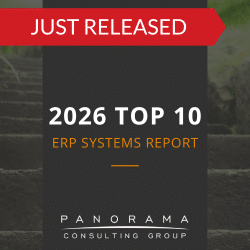Introducing new enterprise software demands more than just technological changes; it requires organizations to reskill their workforce for new systems and workflows.
However, when reskilling employees, many organizations encounter barriers, such as cultural misalignment and change resistance.
Today, we’re talking about how to address reskilling barriers and how to overcome common reskilling challenges.
How to Overcome Workforce Reskilling Issues
1. Challenge: Employee Resistance to Change
Resistance to change is one of the most common barriers to employee reskilling. Employees may fear that learning new skills will be too daunting or view new technology as a threat to their job security. This anxiety can manifest as passive disengagement or active opposition to training initiatives.
Recommendation: Communicate a Clear Vision
Addressing resistance starts with clear and transparent communication from leadership. Explain what changes will occur, why these changes are necessary for the organization, and how they will benefit employees.
In time, employees will see that the project (and their personal development) are positive changes rather than threatening ones.
For example, a distribution company might implement ongoing communication strategies, such as town hall meetings, one-on-one sessions, and feedback loops. This would help demystify the reskilling process, reduce anxiety, and make employees feel more confident about new inventory management and order fulfillment processes.
ERP Training Plan Success Story
We helped this manufacturer implement an ERP training strategy to increase user adoption of its new ERP system.
2. Challenge: Lack of Digital Literacy
Many employees lack the foundational digital skills needed to use modern enterprise software, like ERP software or supply chain management systems.
For instance, finance teams accustomed to legacy accounting software may struggle with the advanced analytics features of a modern ERP solution.
Recommendation: Conduct a Role-Based Skill Gap Analysis
Begin by conducting a comprehensive skill gap analysis for each role within the organization. This analysis should assess current competencies against the skills required for using the new software.
Segment employees into different groups based on their proficiency levels and the specific functionalities of the software they will use. Then, develop customized learning paths for each group, focusing on both technical skills and relevant business processes.
This targeted approach ensures that each employee receives the support they need to bridge their unique skill gaps.
3. Challenge: Ineffective Training Design
One of the biggest workforce reskilling issues stems from poorly designed training programs that fail to align with organizational goals or employee needs.
Many organizations rely on vendor-provided training materials that are often too generic and lack practical relevance. Employees may complete training sessions only to find that they cannot apply what they’ve learned to their specific job functions.
This disconnect between theory and practice leaves employees unprepared and frustrated.
Recommendation: Design Customized, Role-Specific Training
We recommend designing role-specific training programs mirroring real-world scenarios that employees are likely to encounter. This might involve hands-on workshops, simulation-based exercises, or problem-solving sessions tailored to the daily tasks of each role.
For instance, finance professionals might benefit from scenarios related to budgeting and forecasting within the ERP system, while supply chain teams might need to focus on inventory and logistics workflows.
Our change management consultants always tell clients to help employees understand how their actions within the software impact broader organizational goals. This means including business process training alongside technical training to help employees understand why certain tasks are performed within the software.
4. Challenge: Limited Support from Leadership
Employees are unlikely to engage fully in reskilling efforts if they perceive that leadership is not committed to the initiative. When leaders are absent or inconsistent in their support, it signals that reskilling is a low priority, which undermines employee engagement.
Recommendation: Ensure Visible, Ongoing Commitment from Leaders
Executives must be visible champions of the reskilling initiative. This includes participating in training sessions, allocating resources appropriately, and explaining the relationship between reskilling and the company’s strategic vision.
Managers, too, should be involved in setting learning objectives, monitoring progress, and offering encouragement.
For example, a manufacturing company might begin an artificial intelligence (AI) project and empower department managers to become change champions. These are leaders who support their peers by addressing their concerns and providing real-time feedback to the project team.
Expert Tip
Ensure that your reskilling program is part of an overall organizational change management (OCM) strategy. An OCM strategy includes activities that foster transparent communication, stakeholder engagement, and user adoption.
5. Challenge: Time Constraints
Finding time for employees to participate in reskilling programs without disrupting regular operations is a significant challenge. Employees often struggle to balance learning new skills with their existing workloads, leading to burnout and disengagement.
Recommendation: Implement Flexible Learning Options
Offer flexible learning formats, such as virtual workshops, that allow employees to engage in training at a pace that suits them.
In addition, consider allocating dedicated “learning hours” during the week where employees can focus solely on upskilling without conflicting operational demands. This helps prevent overload and ensures that employees have sufficient time to absorb new information.
Our ERP implementation consultants always tell clients to set realistic expectations at the outset. This is especially important when it comes to setting a budget and timeline for implementation activities and ERP training activities.
6. Challenge: Cultural Barriers and Mindset Shifts
Even the best training programs can fail if the organizational culture doesn’t support continuous learning. Employees in a culture resistant to change may view reskilling as unnecessary or may feel unsupported when taking risks associated with learning new skills.
Recommendation: Foster a Growth Mindset
Promote a culture of continuous learning by encouraging employees to view new challenges as opportunities for growth rather than threats to their autonomy.
Leaders can model this mindset by sharing their own learning experiences and emphasizing that skill development is a long-term journey, not a one-time event.
Additionally, we recommend celebrating learning milestones and recognizing efforts publicly.
For example, a government organization might create an annual award ceremony to recognize employees who have completed the most training hours or implemented the most innovative process improvements. This would foster employee engagement and help create a culture of continuous improvement.
7. Challenge: Overemphasis on Technical Skills
Many reskilling programs focus primarily on technical competencies, neglecting the equally important soft skills needed to leverage new software effectively. Skills such as critical thinking and collaboration are crucial for employees to navigate emerging technology and integrate it into their daily work processes.
Recommendation: Incorporate Soft Skills Training into Reskilling Programs
Use collaborative learning techniques, such as group projects and role-playing exercises, to help employees develop soft skills in a practical, team-based context.
For example, a healthcare company implementing a new patient management system could simulate patient interactions to help administrative staff practice both technical usage and interpersonal communication.
8. Challenge: Insufficient Follow-Up and Support
A common mistake in reskilling efforts is assuming that once training is complete, employees are fully equipped to perform their roles.
Without ongoing reinforcement and support, employees may struggle to retain and apply new skills.
Recommendation: Prioritize Post-Training Support
Follow-up training and refresher courses are critical for reinforcing learning and addressing emerging issues.
You can identify issues by creating a feedback loop where employees can voice concerns, request additional training, and share their experiences. This helps you address skill gaps in real-time and ensures the initial investment in reskilling translates into long-term competency.
Is Your Digital Transformation Revealing Skill Gaps?
If so, it’s not too late to develop a reskilling program. But first, make sure you’re prepared for the common reskilling challenges that companies face when new ERP software enters the picture.
Our ERP software consultants can help you close skill gaps and prepare your employees for the future of work. Contact us below to learn about our organizational change management services.














